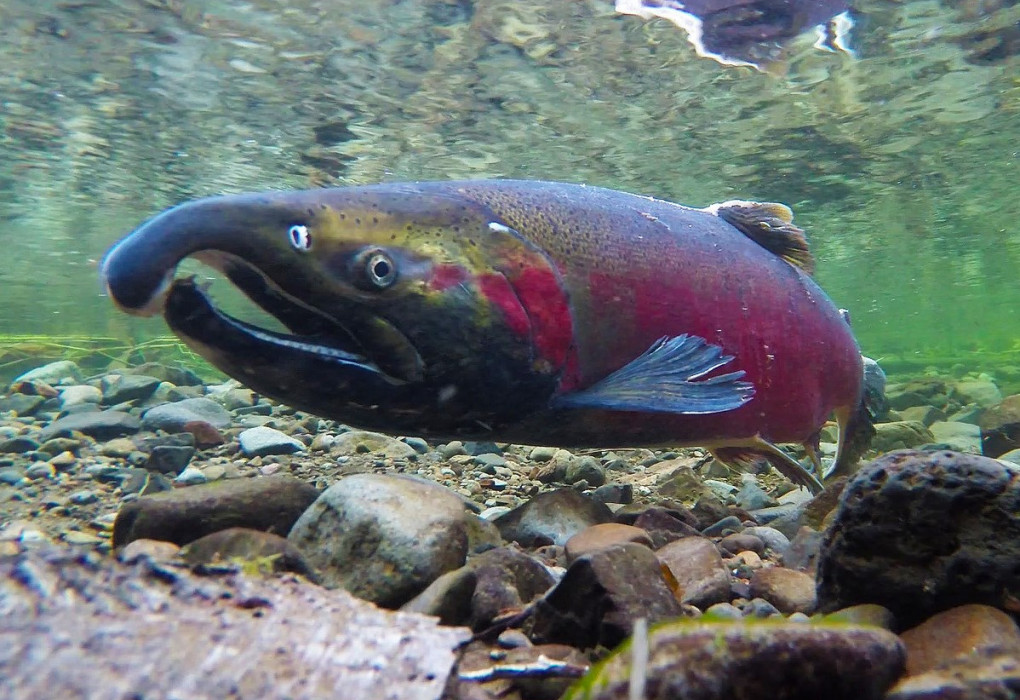NFS and partners secure new protections for Oregon Coast coho salmon
For Immediate Release, March 23, 2023
Contact:
Amy Atwood, Center for Biological Diversity, (503) 503-5660, atwood@biologicaldiversity.org
Josh Laughlin, Cascadia Wildlands, (541) 844-8182, jlaughlin@cascwild.org
Jennifer Fairbrother, Native Fish Society, (541) 602-0696, jennifer@nativefishsociety.org
Legal Agreement Will Bring New Protections From Logging to Oregon Coast Coho Salmon
PORTLAND, Ore.— Resolving multiyear litigation over the harms of logging to coho salmon, conservation groups reached an agreement today with the Oregon Department of Forestry to greatly expand stream buffers across more than half a million acres of the Tillamook and Clatsop state forests. (View the full settlement agreement here).
The Center for Biological Diversity, Cascadia Wildlands and Native Fish Society brought the suit, which asserted that for years the Department had been harming threatened coho salmon — in violation of the Endangered Species Act — by hauling timber on roads hydraulically connected to streams and by logging steep slopes, which causes landslides. Both activities choke streams with fine sediments that smother coho spawning and rearing habitat and degrade water quality for people.
“For too long the timber industry has treated our state forests like cash cows, without enough protection for fish or water quality,” said Amy Atwood, senior counsel at the Center. “The protections provided by today’s agreement aren’t everything we want, but they’ll go a long way toward recovering coho salmon on Oregon’s North Coast.”
Under the agreement, no-cut stream buffers will be expanded from as little as 25 feet to 120 feet and will include many non-fish bearing and seasonal reaches that previously received little to no protection. The Department will also now buffer some upland sites where landslides start, as well as the seasonal stream channels that carry landslide debris into fish habitat, with devastating consequences.
“Logging the exceedingly steep slopes of the Tillamook and Clatsop state forests has real consequences for our beloved and iconic salmon,” said Jennifer Fairbrother, conservation director for the Native Fish Society. “While there is more to be done to improve the management of our state forests, there’s no question that these new protections will help restore fish as well as soil health, water quality and even our climate.”
The agreement also requires the Department to inventory the extensive road network on the state forests within five years to identify problems and estimate the cost to fix them. Built almost entirely for the benefit of the timber industry, there are currently more than four miles of road per square mile of state forest. These include many areas where roads are blocking fish passage, unstable, or contributing sediments directly to streams. The cost of fixing these problems likely extends into the hundreds of millions of dollars and will almost certainly fall to the public to cover.
“The current model of logging state forests to pay for essential county services and Department expenses and provide Big Timber a subsidized source of logs is archaic and unsustainable,” said Josh Laughlin, executive director of Cascadia Wildlands. “Besides not providing a stable source of county funding, the model utterly fails to protect salmon and wildlife, water quality, soil health or our climate. It is past time Oregon leaders sever the tie between clearcutting state forests and county funding and devise a more contemporary strategy to pay for critical services.”
The protections in the agreement are also proposed as part of a “habitat conservation plan.” Under the Endangered Species Act this would allow the Department to cause some harm to coho salmon, as well as marbled murrelets, spotted owls and other imperiled species, in exchange for protecting portions of the state forests from logging and roads. The Department first developed a conservation plan in 1997 but has continuously failed to finalize one. The current plan is expected to be completed this year but is facing stiff opposition from the timber industry and some county officials.
The Center for Biological Diversity, Cascadia Wildlands, and Native Fish Society were represented by Center attorney Amy Atwood and Oliver Stiefel and Maura Fahey of Crag Law Center.
The Center for Biological Diversity is a national, nonprofit conservation organization with more than 1.7 million members and online activists dedicated to the protection of endangered species and wild places.
Cascadia Wildlands defends and restores Cascadia’s wild ecosystems in the forests, in the courts, and in the streets. We envision vast old-growth forests, rivers full of wild salmon, wolves howling in the backcountry, a stable climate, and vibrant communities sustained by the unique landscapes of the Cascadia bioregion.
The Native Fish Society is a nonprofit conservation organization with a mission to restore abundant wild fish, free-flowing rivers, and thriving local communities across Oregon and the Pacific Northwest.
